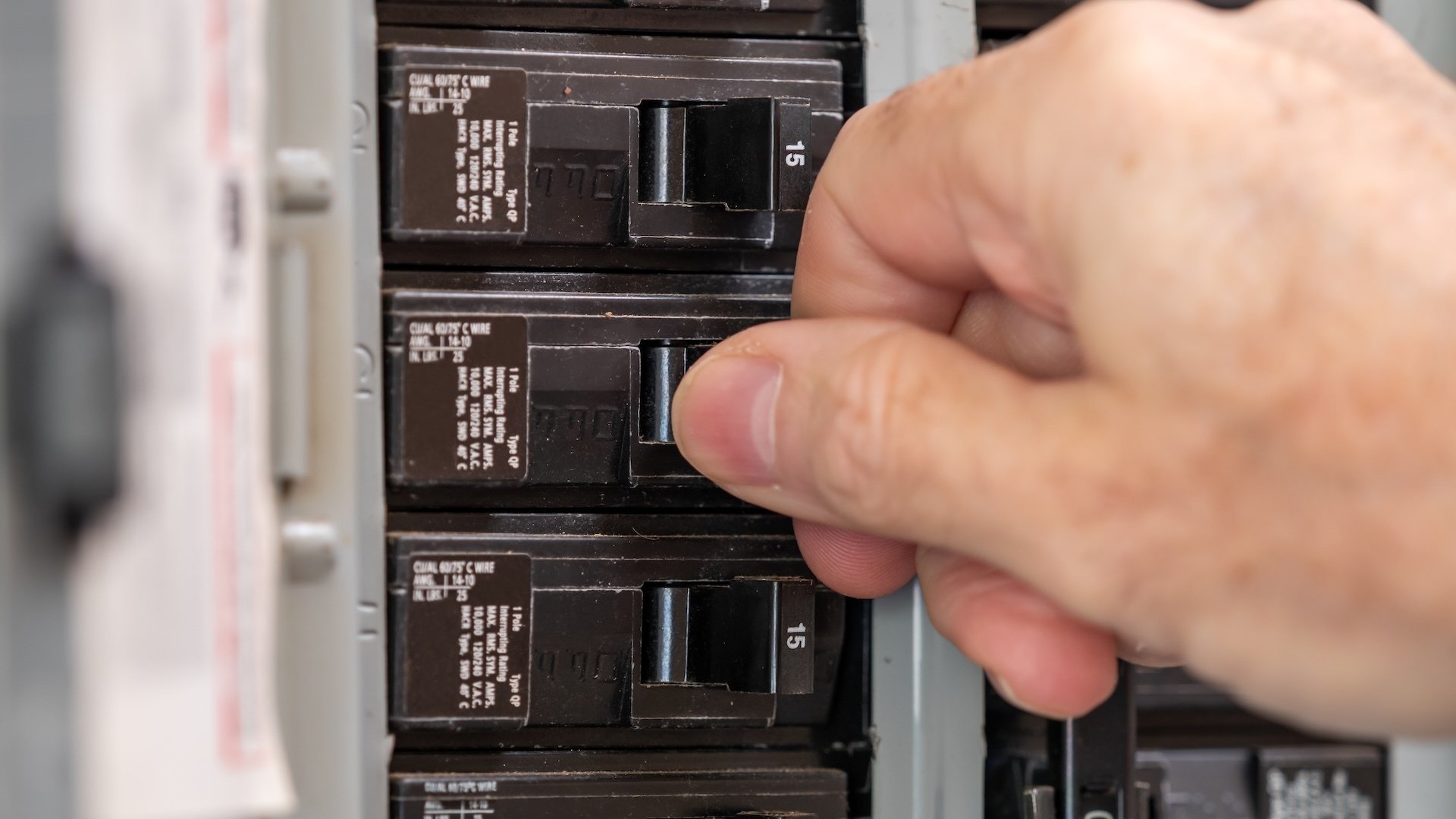We may earn a commission from links on this page.
Moving into a new house is equal parts thrilling adventure and unsettling mystery. You’re taking on a space crammed with unknowns, some of which won’t manifest until you’re comfortably settled. We try to mitigate those unknowns in various ways—home inspections and maintenance checklists, for example—but there’s one mystery too many homeowners leave unsolved until it’s too late: labeling your circuit breakers.
The worst time to figure out which breaker controls what is when there’s an emergency. And clearly labeled breakers save time and effort when you or an electrician is performing maintenance or repairs. Plus, it might actually be required by your local building codes. So if you’ve been living with a mysterious breaker panel since you moved in, today is the day you take it on and label everything.
Start with a floor plan
Your first step is to create a floor plan of your home with outlets and light fixtures marked. This doesn’t have to be fancy—a rough sketch done by hand will work as well as a computer-generated file. Make sure each room is represented, and give the rooms descriptive but generic names—instead of “Billy’s room,” call it “Southwest bedroom.” That way contractors and future owners will know what you’re referring to. Then mark every outlet, switch, and fixture in each room, giving each a unique number or other label. Paste it onto the inside of the panel door. This way anyone can quickly cross-reference the breaker labels with the layout of the house.
Drill down to the outlets
Next, go to each room of the house and start mapping specific outlets and switches to the breakers. There are a few ways to approach this step:
With a partner. The old-fashioned way still works great: Have someone stand by the breaker panel and turn off each breaker one at a time. Each time they switch one off, check outlets until you find the “cold” ones. Double-check by turning the breakers back on to make sure those outlets get “hot.” You can use an outlet tester to make this safe and easy to do, but you can also just use a nightlight.
By yourself. If you don’t have anyone to help you, you can check the outlets either by plugging something in that you’ll be able to hear from a distance (like a radio), methodically turning the breakers off, and noting when the sound stops. Alternatively, you can buy a circuit breaker finder. These work by plugging a transmitter into an outlet, then running the wand over the breakers until you identify which outlet is being used.
When you link an outlet to a breaker, mark it on both the label that you’ll paste next to the breaker and on your floor plan. This will make it easy to reset or turn off breakers when you need to.
If you identify any breakers that don’t seem connected to anything, leave them off. Check to see if they’re connected to the infrastructure of the house—the furnace, water heater, HVAC system (which usually require larger, “double” breakers), or outdoor lighting. If you can’t figure out what the breaker is connected to, leave it off and consider bringing in an electrician to figure it out.
Label wall plates
While you’re checking outlets and switches in each room, remove the wall plates and write the label on the other side before replacing them. This is an extra layer of information you can use—if you’re replacing an outlet, you can see at a glance which breaker needs to be turned off before proceeding—plus it’s an extra layer of safety. If the labels don’t match, then something’s gone wrong with your mapping, and you need to repeat the process to ensure you’ve got everything labeled correctly.
Keep a separate record
Finally, consider setting up a separate written record. A photo of your labeled panel and the floor plan will do, but consider a handwritten chart kept in your home maintenance binder (which you have, right?) or a spreadsheet in the cloud with each breaker clearly labeled. Spreadsheets are great because they’re easily updated whenever you have new circuits installed, and can be shared with contractors before they even arrive at your house so they have all the information they need.
There are also apps that can make mapping your breaker panel a little easier. Breaker Box is available for both Android and Apple phones, for example. It makes it simple to create a custom breaker panel legend, which you can then size to fit your panel and print out.
